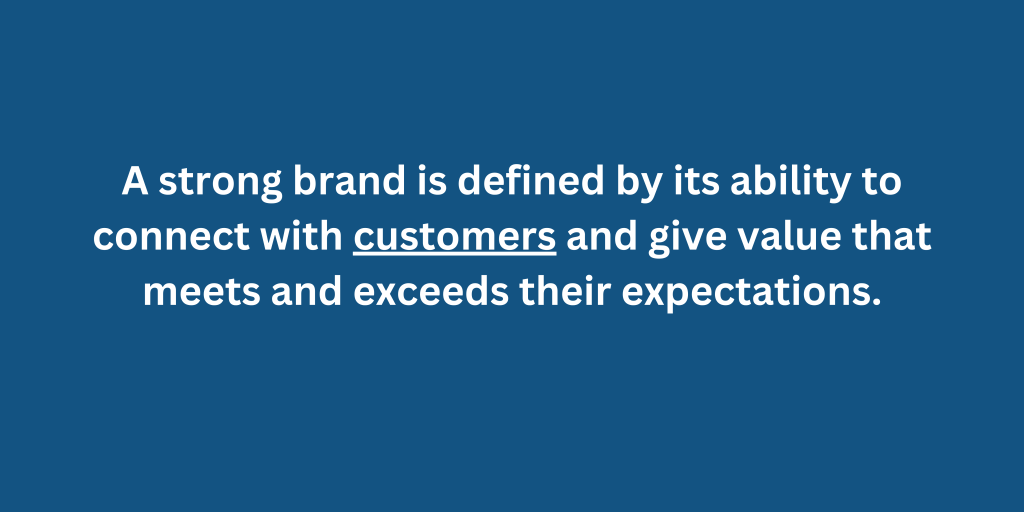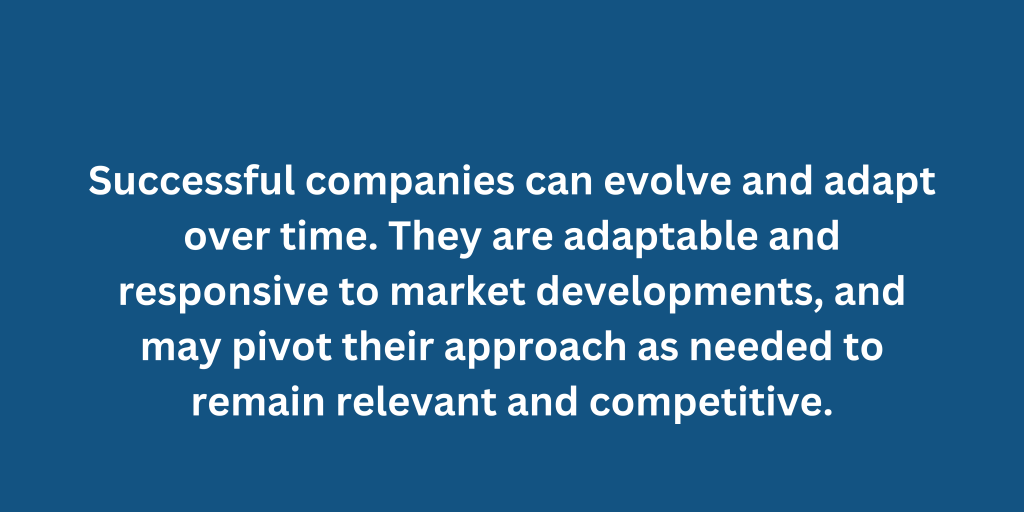In today’s fast-paced corporate world, innovation is critical to driving growth and staying ahead of the competition. Successful brands always seek new ways to innovate and push the boundaries, whether through new technologies, novel marketing methods, or game-changing product designs.
In this article, we will look at brands that have shown a commitment to innovation and contributed to driving industry transformation in their particular sectors. These organizations have pushed the boundaries and continue to set the bar for what is achievable in their respective industries.
Examples of Famous Brands
Brands exist across industries and regardless of industry, a strong brand is defined by its ability to connect with customers and give value that meets and exceeds their expectations.
- Apple
- Nike
- Coca-cola
- Amazon
- Louis Vuitton
- Chanel
- Mercedez
- Toyota
Apple
Apple’s brand is built on innovation, design, and quality. The company designs products that are simple to use and offer high performance and functionality. This emphasis on user experience has allowed Apple to build a devoted client base prepared to pay a premium for its goods. The company’s product lines include the iPhone, iPad, MacBook, and Apple Watch.
Nike
Nike manufactures trainers, athletic gear, and accessories and its brand is built on performance, innovation, and inspiration.
Coca-Cola
Coca-Cola’s brand is based on enjoyment, refreshment, and nostalgia. The company’s product lines include Coca-Cola Classic, Diet Coke, and Sprite.
Amazon
Amazon’s brand is built on customer excellence, convenience, selection, and low costs. Amazon’s products include Amazon.com, Amazon Prime, Kindle, Amazon Web Services (AWS) and Kindle Fire.
Louis Vuitton
Louis Vuitton is a French fashion house that has built a strong brand based on luxury, exclusivity, and excellence. Its products include handbags, luggage, and accessories.
Chanel
Chanel is another French fashion brand built on elegance, sophistication, and timelessness. Chanel’s products include Chanel No. 5 perfume, Chanel suits, and Chanel handbags.
Mercedes-Benz
Mercedes-Benz is a German luxury automotive manufacturer that has built a strong brand on innovation, performance, and status. Its products include the S-Class sedan, the G-Class SUV, and the AMG performance vehicles.
Toyota
Toyota is well-known for its dependability, quality, and affordability. The company has earned a reputation for making safe, durable, and fuel-efficient vehicles, as well as providing excellent customer service.
Can You Build a Brand Within a Short Period?
Some people believe that brands are built over time. That is, the best brands are the ones that have been around for a long time, so have built their brands through years of delivering high-quality reliable products. This might be the case for many brands (such as Coca-Cola, Mercedes-Benz and Chanel), but there are also companies like Google and Amazon that haven’t been around that long either. This means that time is critical but not a guarantee that a company will successfully build their brand. However, building a brand requires building customer trust over time by consistently providing high-quality products and services, providing exceptional customer service, being transparent, and acting ethically.
Brand Elements
What do most popular brands have In Common?
- A clear vision and mission
- Consistency
- Differentiation
- Emotional connection
- Brand communication
- Trust
- Innovation and adaptability
A Clear Vision or Mission
Successful brands have a clear sense of purpose and mission that guides all they do. They understand their target audience and what they want to accomplish, and they direct all of their branding efforts towards that goal. For example, Google’s mission is to “organize the world’s information and make it universally accessible and useful.”
Consistency
Successful companies are consistent in their messaging, visual identity, and customer experience across all touchpoints. They have a consistent and unified brand experience that is easily recognized and remembered.
Differentiation
Successful brands meaningfully differentiate themselves from their competition. They have a distinct value proposition or selling point that distinguishes them and makes them memorable in the minds of consumers.
Emotional connection
Brands establish an emotional bond with their customers. They understand their consumers’ values, desires, and aspirations and utilize storytelling to generate empathy and connection.
Nike, Apple, and Google have all used story-telling to engage emotionally with their customers. Nike, for example, has long utilized the motto “Just Do It” to inspire and motivate athletes and people in general to exercise. Their commercial campaigns frequently contain real-life stories of athletes overcoming hurdles to reach their goals, which builds strong emotional connections with viewers.
Athleta’s most recent advertisement, which features mothers who are also athletes, emphasizes the brand’s commitment to inclusivity and embraces the diversity of women and their experiences. Athleta can engage with its audience on a deeper level and establish a better relationship with them by sharing relatable and inspiring stories of women.
IKea’s “Proudly Second Best Ad” recognizes the special link that exists between parents and their children, the retailer showcases its extensive children’s assortment and gladly embraces the second-best position in a family. In a natural and homely setting, the commercial highlights their top-selling products which are often overlooked by children in favour of their parents.

Brand Communication
There is no branding without brand communication.
Fashion brands frequently invest heavily in marketing and advertising campaigns, as well as in events such as fashion shows and product debuts. These events help generate media attention, social media engagement and general excitement about the business. Each year, companies like Coca-Cola, Nike, and Procter & Gamble spend billions of Dollars on marketing and advertising campaigns. Procter & Gamble spent more than 7.2 billion US dollars on advertising and marketing in 2020, while Coca-Cola spent more than 4.2 billion US dollars. Nike spent over 3.5 billion US dollars on advertising and promotions in the same year.
Trust
Customers place their trust in successful brands. They are trustworthy, honest, and dependable, and they constantly keep their promises.
Customers have a huge impact on brand value and equity. General Motors (GM), an American automaker, was chastised for the quality and dependability of its automobiles throughout the 1990s and early 2000s, particularly in comparison to its Japanese competition. In addition, the corporation was slow to introduce more fuel-efficient automobiles and adopt new technology like hybrid and electric vehicles. As a result, General Motors’ sales and market share fell, and the corporation declared bankruptcy in 2009. There’s been a turnaround since then, but this example highlights the importance of maintaining brand trust.
Innovation and Adaptability
Successful companies can evolve and adapt over time. They are adaptable and responsive to market developments and may pivot their approach as needed to remain relevant and competitive. Successful brands frequently outperform their competition by inventing and bringing new products, services, and experiences to the market. They are not hesitant to take risks and try new ideas, and they can adapt to changes in technology, consumer tastes, and market trends.
Depending on the sector and the company, innovation can take many forms. In the technology industry, for example, innovation can entail building new software, hardware, or services to solve existing problems or meet emerging needs. However, In the food and beverage sector, innovation can take the form of creating new flavours or ingredients, as well as experimenting with new cooking processes or presentation styles.
Case Studies On Innovation
Apple
Portable Music Players
When Apple introduced the iPod in 2001, it revolutionized the music industry by introducing a portable music player that could hold thousands of songs. Along with the iPod, Apple introduced the iTunes Store in 2003, which was the first successful online music distribution platform.
Smartphones
With its intuitive touchscreen interface and powerful mobile computing capabilities, Apple’s debut of the iPhone in 2007 revolutionized the smartphone business.
Tablet Computers
The debut of the iPad in 2010 spawned a new product category and aided in the mainstreaming of tablet computers as a consumer technology.
Wearable Technology:
The release of the Apple Watch in 2015 helped to popularize and establish wearable technology as a new product category.
Nike
Waffle Soles
Nike co-founder Bill Bowerman invented the first running shoe with a waffle sole in 1974, which improved traction and grip on the track.
Vaporfly
This cutting-edge technology has been credited with assisting elite runners in breaking marathon records.
Coca-Cola
While Coca-Cola’s primary product remains its classic soda, the company has also produced a variety of additional products throughout the years, including Diet Coke, Coca-Cola Zero Sugar, and energy beverages like Coca-Cola Energy. Coca-Cola has remained relevant and ahead of its competition by constantly innovating and adapting to changing consumer demands.
Diet Coke was not the first beverage to use aspartame as a sweetener, but it was one of the first large brands to do so.
The US Food and Drug Administration (FDA) approved aspartame for use in tabletop sweeteners for the first time in 1981. Aspartame was cleared for use in carbonated beverages by the FDA in 1983, and Diet Coke was introduced the same year as a diet soda sweetened with aspartame.
Despite not being the first beverage to use aspartame as a sweetener, the introduction of Diet Coke marked a milestone in the history of aspartame and diet drinks. Diet Coke’s success helped to establish aspartame as a popular and generally accepted sweetener n sodas, paving the path for other aspartame-sweetened diet beverages.
Louis Vuitton
Louis Vuitton is built on a combination of cultural influence and design innovation.
On the cultural side, Louis Vuitton has come to be associated with luxury, grandeur, and exclusivity. The famous LV monogram, initially established in 1896, has become a worldwide symbol of status and sophistication. Moreover, collaborations with artists, designers, and celebrities have also contributed to the brand’s cultural cachet. In terms of innovation, Louis Vuitton was the first to develop a waterproof trunk, allowing travellers to secure their things during extended journeys. From the first purse with a shoulder strap in 1930 to the first rolling luggage in 1978, the brand has created many additional creative designs over the years.
What Can Small Businesses Learn from Big Brands?
- Building a successful brand takes time and effort
- Staying ahead of the competition requires innovation
- Storytelling can help you connect emotionally with your customers
- Product quality and customer trust is important
Building a successful brand takes time and effort
Successful brands such as Apple, Coca-Cola, and Nike did not become household names overnight; they were built over years of constant marketing and product innovation.
Staying Ahead Requires Innovation
Brands that fail to develop and keep up with shifting trends and consumer needs risk falling behind competitors and losing market share.
Storytelling Can Help you Connect Emotionally with Your Customers
Brands like Nike, Apple, and Athleta can form closer ties with their customers by providing relevant and inspiring campaigns.
Product Quality and Customer Trust Is Important
Brands like Toyota and Mercedes have built their reputations on quality and reliability, which has earned them the trust and loyalty of their customers.
Marketing and advertising play a key role in brand awareness: While quality products and innovation are important, effective marketing and advertising campaigns are critical for building brand awareness and driving sales.




